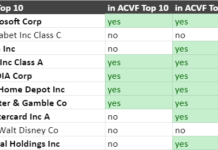Tom Konrad
In 2007, it seemed like clean energy was finally becoming mainstream. Both candidates for the US Presidency accepted the need to act on global warming, even if they did not agree on the degree, and clean energy stocks were rising even faster than the broad stock market.
Then came the 2008 financial crisis, and many Americans discovered they had much more immediate worries than the slow but inexorable warming of the planet. Fossil fuel interests and the politicians who benefited from their donations played to the new mood by providing a worried populace with the excuse they wanted not to worry about the lumbering menace by denying it’s existence.
Always Darkest Before the Dawn
Fast forward to 2012. Leading clean energy stock indices continued to decline while the broader market staged a recovery. A solar company became the poster boy for why government should not meddle in the energy market (despite the reality that energy is the most-meddled-in sector of the entire economy.) The Doha round of climate talks concluded with no progress, and only the possibility of more progress in the future.
I started writing this article on the last day of the Mayan Calendar, I recall that it always seems darkest before the dawn. Contrarian investors also know this, and know that the best time to buy is when other investors are running in terror. The fact that you are reading this article means that we survived the winter solstice and the end of the Mayan calender. (Incidentally, the world also survived the much more momentous end of the entire Mayan civilization, a fact that seems lost in the apocalyptic kerfuffle.)
In this apparent darkness, my panel of green money managers finds reasons to hope for a much better 2013. Here is what they have to say:
 Garvin Jabusch: Climate Changes Get Noticed
Garvin Jabusch: Climate Changes Get Noticed
Garvin Jabusch is cofounder and chief investment officer of Green Alpha ® Advisors, and is co-manager of the Green Alpha ® Next Economy Index, or GANEX and the Sierra Club Green Alpha Portfolio. He also authors the blog ”Green Alpha’s Next Economy.”
Jabusch says,
[T]he green economy is finally showing signs of approaching a meaningful inflection
point into mainstream acceptance.Sandy, in slamming into the geographical and symbolic hearts of finance and policy in this country has brought climate risks and costs into popular discussion, but even before that, there were indications of a cultural tipping point. PricewaterhouseCoopers, McKinsey, the World Bank, the National Academy, Berkshire Hathaway, the Center for American Progress and the Clinton Global Initiative (among many others) have all recently issued strongly worded statements and reports about looming climate risks and also opportunities to mitigate and adapt. This year saw polar ice and also snow reach an all time minimum, and the drought in America’s heartland has only worsened as we’ve headed into winter. For example, fully 100% of Kansas was this week named to be in at least “severe drought” stage.
All these things do not go unnoticed, and people understand the need for an economic transition to put society on a more sustainable footing more than they ever have, in spite of efforts from some quarters to convince them otherwise. Lester Brown and his team at Earth Policy Institute have we believe correctly identified the weakest link in global economics with respect to climate: food security. What this means is that there is no disambiguating the energy-water-food nexus if we want to have a thriving civilization going forward. An investment manager who works hard to identify and buy the best mitigation and adaptation solutions delivered by the smartest companies in the most profitable ways now has almost an embarrassment of options for his clients’ portfolios. A carefully selected
basket of companies across various green energy and green economy applications should have an excellent chance to provide competitive returns.
 Rob Wilder: A Conservative Surprise
Rob Wilder: A Conservative Surprise
Dr. Rob Wilder is Index Committee Chair for WilderHill Clean Energy Index (ECO), the first to capture and track this sector. ECO underlies the PowerShares WilderHill Clean Energy ETF (NYSE:PBW.)
Dr. Wilder thinks Jabusch could be right. He says,
Perhaps what might truly surprise and impact clean energy stocks the most, could be Conservative Republicans beginning to embrace renewable energy. So that American patriotic, Renewable resources which give independence and free us from reliance on foreign oil, are seen as a good thing. Right now it’s this political opposition to U.S. technologies that could grow fast like American-made electric cars, solar homes and businesses, offshore wind, and energy efficiency etc has most held us back.
Break that logjam and huge progress could be unleashed. For conservatives to embrace green as good in itself, or appreciation for emerging forces like climate change and new polls showing Americans accept the science here, would be compelling because it’s such a surprise.
 Jan Schalkwijk: A Year of Triage
Jan Schalkwijk: A Year of Triage
Jan Schalkwijk, CFA is a portfolio manager with a focus on Green Economy investment strategies at JPS Global Investments in Portland, OR.
Schalkwijk takes a more nuanced view, but is still optimistic about the prospects of stronger green companies. He predicts that 2013 will be “a year of triage,” by which he means “investors will become more discriminating in evaluating which companies are terminally ill and which have just caught the flew from exposure to their sickly brethren. … stocks with the prospect of earnings, healthy gross margins, and positive cash flow should do better than science project stocks with low quality fundamentals.”
He continues,
I think 2012 might have marked the beginning of a reversal of fortunes for some clean energy stocks and the beginning of the end for others. It is my prediction that this process of triage will build steam in 2013. If we look at how the performance of the Wilderhill Clean Energy ETF (PBW) and Market Vectors Global Alternative Energy ETF (NYSE:GEX) differed in 2012, we get a glimpse of what might lie ahead. The former fund, which has a seat for almost any publicly traded green stock, is down nearly 22% year-to-date, whereas the latter, which has size and liquidity requirements, is flat for the year. In 2011 the two funds moved down in tandem.
Schalkwijk’s ETF Pick
Schalkwijk thinks the best ETF to play the triage trend is PowerShares Cleantech (NYSE:PZD). He says, “Over the last 5 years, PZD has “only” lost 35% of its value vs. 85% for the WilderHill Clean Energy ETF (PBW). The Fund’s strengths are its inclusion of larger diversified industrials that are building a lot of the clean energy infrastructure (Schneider (PA:SU, OTC:SBGSF), Siemens (NYSE:SI), ABB Group (NYSE:ABB)) as well as its underweight to the more speculative corners of the cleantech and alternative energy space.”
 Rafael Coven: In His Own Words
Rafael Coven: In His Own Words
Rafael Coven is Managing Director at the Cleantech Group, and manager of the Cleantech index (^CTIUS) which underlies the Powershares Cleantech ETF (NYSE:PZD.)
Given Schalkwijk’s endorsement, it’s no surprise that he sees 2013 in a similar way. While he picks stocks for longer than one year, he expects a “Greater focus on generating cash flow and ability to be profitable without relying on subsidies and government largess” in 2013. He expects the overall number of cleantech companies to contract, “as the best ones continue to get snapped up by old-line industrial players that can buy cheaper than innovate.”
Conclusion
Even if politicians tackle US Fiscal Cliff and Europes ongoing woes do not lead to outright crisis, it’s almost certain that 2013 will not be a repeat of go-go years like 2006 and ’07. Hence, while the optimists may be right that climate events will be noticed, perhaps even by conservative Republicans, even a more favorable political climate will continue to test companies’ financial strength and business models.
Hence, even a year of inflection will probably also be a year of triage. If I had to pick an ETF to play the trend, I’d go with the one that discriminates between strong and weak cleantech companies: Coven’s PZD.
Disclosure: I have no position in the ETFs mentioned, and a long position in ABB.
This article was first published on the author’s Forbes.com blog, Green Stocks on December 27th.
DISCLAIMER: Past performance is not a guarantee or a reliable indicator of future results. This article contains the current opinions of the author and such opinions are subject to change without notice. This article has been distributed for informational purposes only. Forecasts, estimates, and certain information contained herein should not be considered as investment advice or a recommendation of any particular security, strategy or investment product. Information contained herein has been obtained from sources believed to be reliable, but not guaranteed.








